Lifestyle
Incredible Artist Homes: Part I. The Nineteenth Century Grandees

By Tori Campbell
Artist Homes
“There’s no place like home”, “Home is where the heart is”, “Love begins at home”. For centuries writers have explored the value, importance, and influence of home on the individual. For artists, home can also serve as their workplace — a studio in which their artistic process unfolds. Or, it can be inspiration — a physical setting and tangible surroundings that inspire and nurture, and can also be realised by their inhabitants on a canvas, a photograph, or in clay. Step over the threshold and take a tour of some of the most striking examples of grand bohemian living as exemplified by leading figures of the Nineteenth Century.
J.M.W. Turner’s Sandycombe Lodge

Just outside London, in Twickenham, stands J.M.W. Turner’s home, Sandycombe Lodge. Designed and built by Turner himself in 1813 the artist’s home is primarily inspired by the landscape of the Thames, so often a source of inspiration for his paintings. Intended to be a retreat from the pressures of the art world and urban ills of London, Turner lived here with his father William in his old age, a retired barber and wigmaker. Sold by Turner in 1826, Sandycombe Lodge is a small but quirky, humble, domestic space that used to stand on a large plot of land flanked by two estates. These structures no longer stand, but the Sandycombe Lodge remains, a testament to the life and work of Turner as it is now open to the public as a house museum, where visitors can peruse the work of the prolific landscape painter and view his many architectural sketches for the Sandycombe Lodge. Visit the home and see the space for yourself: here.
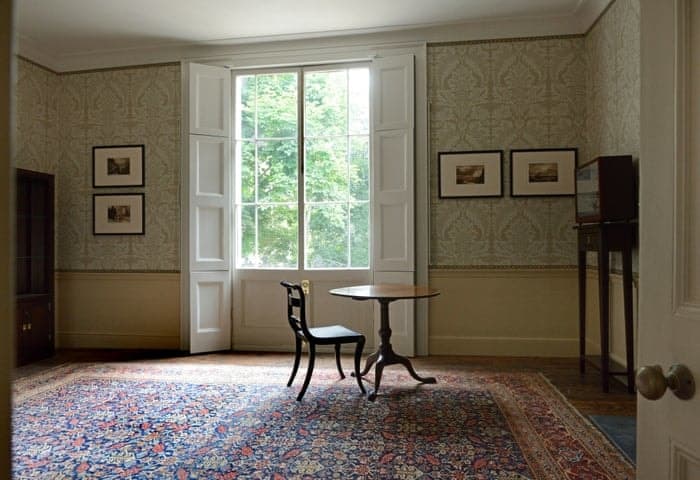
Gustave Moreau’s Grand Parisian studio
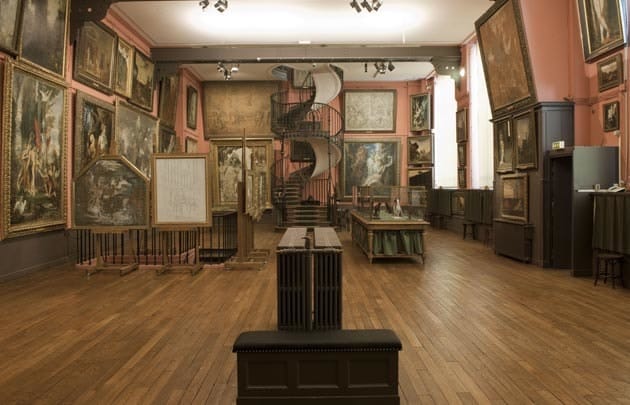
French Symbolist painter Gustave Moreau purchased his home in Paris’ 9th arrondissement in 1852. With a small studio on the home’s third floor, he was able to live and work comfortably for many years at this provincial home on Rue de la Rochefoucauld. By April of 1895 however, Moreau decided to have his home converted to allow for more space for his work, instructing young architect Edouard Louis Dainville to construct vast studios on the second and third floors. With these grand spaces now able to accommodate and honour his work properly, and also facilitated in part by the loneliness of his life and consequent modest domestic needs, Moreau eventually combed through his oeuvre — converting his home into an eponymous museum. The home as it can be visited today is true to the layout and designs of the late artist, while the first floor preserves his living quarters, complete with family heirlooms and luxurious furniture; the visitor can ascend the magnificent spiral staircase into the second and third floors to view over 1,300 paintings and 5,000 drawings. Visit one of the most impressive artist studios in France, or all of Europe: here.
Frederic Lord Leighton

Reflective of Frederic Leighton’s precise requirements, the home of the late Victorian painter and sculptor is the only purpose-built-studio-home that can be visited by the public in the United Kingdom. Expanded throughout the thirty years of the artist’s occupation of the home, the space grew from a modest home to a ‘private palace of art’ with numerous embellished touches. The Arab Hall, replete with golden dome, Islamic tiles, and intricate mosaics makes the artist home one of the most unique buildings of the 19th century. His home stands as a reflection of the artist’s interest in the high taste of the time, the Orientalist movement and is a vehicle for displaying the many artifacts he collected upon his travels. Upstairs, soaked in sunlight, his studio became a place for the entertainment of prominent social figures including Queen Victoria. The home can be visited today as the Leighton House Museum, where visitors can enjoy the home alongside numerous paintings and sculptures by the late artist. Plan your visit: here.
William Morris’ Red House in Bexleyheath

Dedicated to social reform and devoted to his ideals of art, craftsmanship, and community; designer William Morris and architect Phillip Webb collaborated in 1859 to design and build the Red House, a space where the home’s architecture, interior design, and furnishings would unite as one. The home would become an iconic example of the Arts and Crafts Movement, in which he employed craft and artisan trades to meld the domestic with the artistic to create a space of visual harmony. Within a commuting distance of central London, William Morris and his wife, Jane, entertained numerous friends at the Medieval-inspired neo-gothic home. Among notable visitors were Pre-Raphaelite painters Dante Gabriel Rossetti and Edward Burne-Jones, who decorated the home with wall murals. The residence was to become the de facto clubhouse of the group, a Pre-Raphaelite hang-out within easy distance of London. Despite the care and attention to detail put into the home, Morris ultimately found it too expensive to maintain and was forced to move out after five years. The home is now run by The National Trust as a museum, and visitor information can be found here.

Pierre-Auguste Renoir’s garden and home in Essoyes
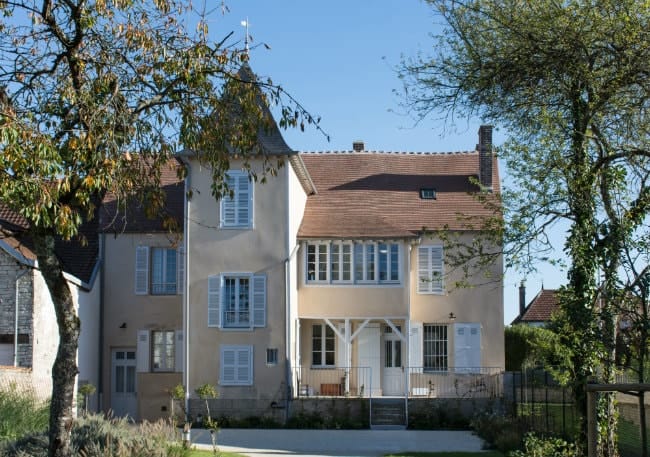
Aline Victorine Charigot, an eighteen year old girl from the provincial town of Essoyes, met Pierre-Auguste Renior in Paris where, taken by her beauty, he asked her to pose for him. After becoming his model, she then became his wife, and in 1885 brought her new husband to visit her hometown of Essoyes where he just as quickly fell in love with the landscape and local people. The two returned to Essoyes every summer for 30 years and in 1896 they purchased a family home from which they could enjoy the village and slower pace of life. Essoyes can be seen in many of Renoir’s canvasses throughout his career, seen as the backdrop for portraits of his children and one of his favourite models, their nanny Gabrille Renard; as well as the market, landscape, church, and local villagers. The home, garden, and studio of Renoir in Essoyes can now be visited by the general public; where you can stroll through the lush garden landscape and take in his paintings and sculptures just as he would in the life he spent there over a century ago. Find out how to visit: here.

Paul Cézanne’s Jas de Bouffan
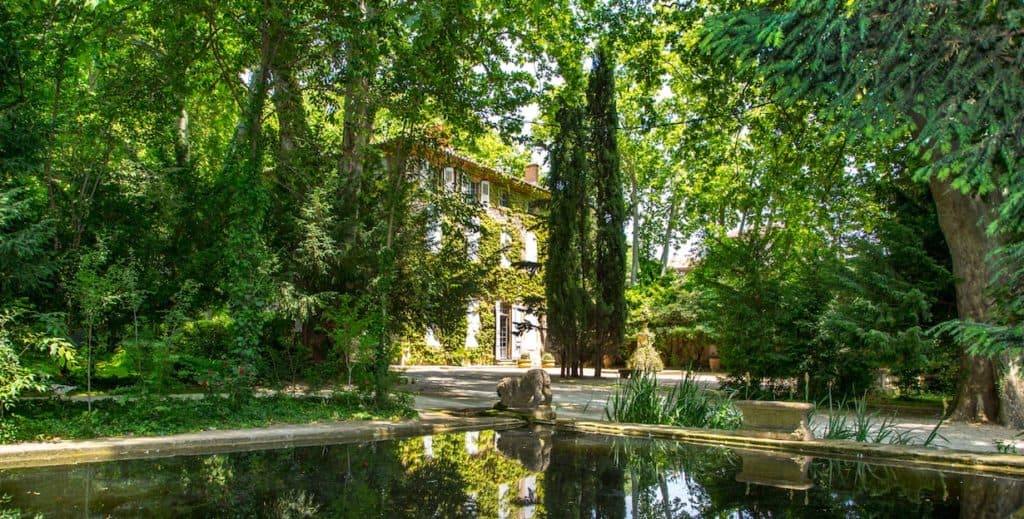
Jas de Bouffan, a historic bastide in Aix-en-Provence, France was built in 1730 by famed local architect of the time, Georges Vallon, in the local golden stone. Over a century later Louis-Auguste Cézanne, an upwardly mobile banker, purchased the estate for himself and his twenty year old son. His son, prolific painter Paul Cézanne, spent innumerable days in the backyard of the home, gazing at the surrounding landscape — inspired by the view of Montagne Sainte-Victoire. In 1880 the painter established a studio in the attic, and painted the walls of his father’s living room with a dozen luminous murals. In all, Cézanne would produce nearly forty oil paintings and over a dozen water colours while in residence at the Jas de Bouffan, a testament to the artistry of the surroundings’ natural beauty. See for yourself, visit the home and studio: here.
Claude Monet’s Giverny home and garden

It is no surprise or secret where Claude Monet gained his inspiration for his most famous series of paintings (arguably the most famous series of all time). Stepping onto the grounds of the late painter’s home in Giverny, the visitor immediately notices the quaint Japonist bridge traversing a beautiful garden pond, a familiar site as the subject of Monet’s water lilies series. And no wonder, the home and garden are stunning, drenched in sunlight and vibrant colours; featuring a bright blue kitchen and a yellow dining room, it seems nearly impossible not to be inspired by the natural and architectural surroundings of Monet’s home. The immaculate grounds literally and figuratively fed the artist, with vegetables from the kitchen garden providing the physical nutrition necessary for Monet to be able to devour the aesthetics of a lilypad floating upon a lightly rippling pond. Visitors today can see all of this for themselves, from the iconic garden to the artist’s first studio, where he worked until 1899 before being transformed into a comfortable sitting room bedecked with the artist’s work. Plan your visit: here.
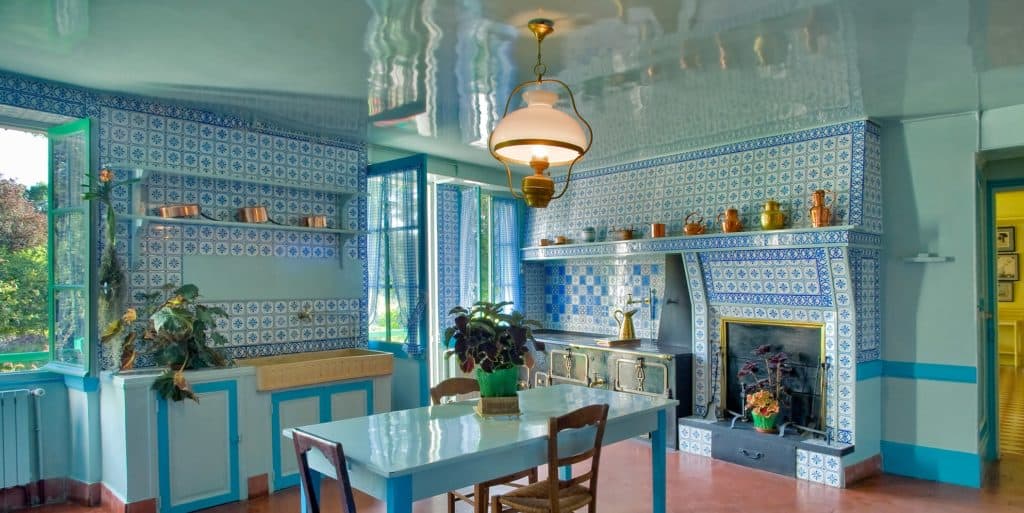
Relevant sources to learn more
Check out some crafts of domesticity with our folk traditions series
Enjoy this NYTimes article reflecting on Cézanne’s Provence